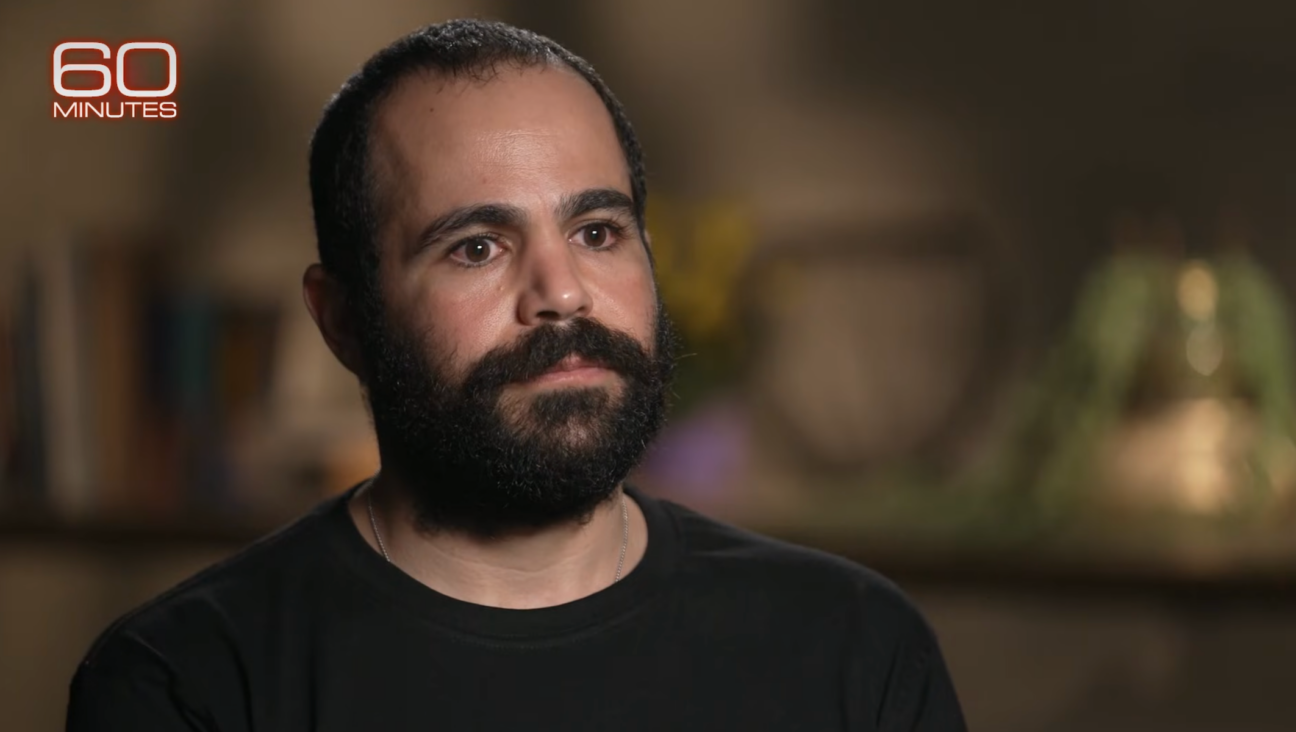Ghostly
Ira Epstein writes:
“In several recent news reports in the English media, the Jerusalem street ‘Emek Refa’im’ was referred to as the ‘Vale of Ghosts’ or ‘Valley of Ghosts.’ While I know that the Hebrew word refa’im in the Bible can be translated as ‘ghosts,’ is there any special significance to the association of ghosts with the location of the street?”
Emek means “valley” in Hebrew, and Emek Refa’im Street is a street that some of you would no doubt be familiar with even if it had not been the site of several suicide bombings in recent years. It is a main thoroughfare that starts near the currently defunct Jerusalem railroad station, south and west of the southwest corner of the Old City wall, and runs in a southerly direction through the neighborhoods of the German Colony and Bak’a —two areas with a high concentration of American Jews. It indeed lies in a valley, the land to the east rising to Abu-Tor and East Talpiyot, and to the west, to the high ground of the Katamons.
“The Valley of Refa’im” is mentioned in a number of places in the Bible and is spoken of in the Book of Samuel as the site of a major battle between the forces of King David and the Philistines. Although the description of this battle does not tell us exactly where the valley is, we know the location from the Book of Joshua, in which, in tracing the boundary between the tribes of Benjamin and Judah, the text says: “And the border went up by the valley of the son of Hinnom unto the south side of the Jebusite, which is Jerusalem; and the border went up to the top of the mountain that lieth before the valley of Hinnom westward, which is at the north end of the Valley of Refa’im.”
Jerusalem, at the time of Joshua, was the main fortified city of the Jebusites, and “the Valley of the Son of Hinnom,” Gey Ben-Hinnom in Hebrew, is the ravine, steeper-sided than the Valley of Refa’im, that lies today between the Old City’s Jaffa Gate and the cobblestoned neighborhood of Yemin Moshe with its landmark 19th-century windmill. (Years ago I wrote a column explaining how “Gey Ben-Hinnom,” contracted to gehinom, came to be the Hebrew word for “Hell” because of the ravine’s ancient use for human sacrifice and as a garbage dump, thus also giving us the English word “Gehenna.”) Gey Ben-Hinnom is immediately to the north of the beginning of Emek Refa’im Street, just as the Bible says.
“Ghosts,” or the shades who inhabit the underworld, is one of the two meanings of the Hebrew word refa’im in the Bible. One finds this in various places, such as the 14th chapter of Isaiah, in which the prophet, describing the impending fall of Babylon, declares to its king whom he imagines being killed, “The underworld is moved for thee to meet thee at thy coming; it stirreth up the refa’im for thee….” In other ancient Semitic languages like Canaanite and Ugaritic, rifa’im denotes underworld dwellers too.
But the biblical refa’im also refers to a living people that dwelt in Palestine prior to the Israelite conquest. Deuteronomy 2:21, for example, describes the country of the Ammonites, the area around the present-day Jordanian capital of Amman, as having once been “the land of the Refa’im; Refa’im dwelt therein in olden times; and the Ammonites called them Zamzumim; a people great, and many, and tall as giants; but the Lord destroyed them before them [the Ammonites], and they succeeded them and dwelt in their stead.” The very next chapter of Deuteronomy, on the other hand, places “the land of the Refa’im” further north, in the Bashan or Golan Heights, the home of the kingdom of the legendary giant Og.
The Refa’im, it would thus appear, were a mythical race of giants related to such other legendary creatures as the Emim or “Frightening Ones,” also referred to in Deuteronomy 2 as unusually tall, and the Nefilim or “Fallen Ones,” mentioned in the Book of Genesis as the offspring of heavenly beings and earthly women, and in the Book of Numbers as the titans seen by the 12 spies sent to scout out the Holy Land. “We were as grasshoppers [compared to them],” the returning spies tell the Children of Israel, who become quickly demoralized at the thought of having to fight such creatures.
The biblical emek refa’im, therefore, can be understood as either “the valley of the ghosts” or “the valley of the giants.” Jewish tradition has always chosen the second of these two options in the belief that it was the legendary living and not the legendary dead that gave the place its name. The second-century C.E. Aramaic Targum of Onkelos translates the words as meshar gibaraya, “the Plain of the Mighty,” and although Jerome’s fourth-century Latin Vulgate stuck to the noncommittal vallis Raphaim, our English King James Version, following the Jewish commentators, has “the valley of the giants.” Exactly which English news media preferred “the valley of the ghosts,” Mr. Epstein doesn’t tell us. Perhaps they were haunted by all those suicide bombs.
The Forward is free to read, but it isn’t free to produce

I hope you appreciated this article. Before you go, I’d like to ask you to please support the Forward.
At a time when other newsrooms are closing or cutting back, the Forward has removed its paywall and invested additional resources to report on the ground from Israel and around the U.S. on the impact of the war, rising antisemitism and polarized discourse.
Readers like you make it all possible. We’ve started our Passover Fundraising Drive, and we need 1,800 readers like you to step up to support the Forward by April 21. Members of the Forward board are even matching the first 1,000 gifts, up to $70,000.
This is a great time to support independent Jewish journalism, because every dollar goes twice as far.
— Rachel Fishman Feddersen, Publisher and CEO
2X match on all Passover gifts!
Most Popular
- 1

Film & TV What Gal Gadot has said about the Israeli-Palestinian conflict
- 2

News A Jewish Republican and Muslim Democrat are suddenly in a tight race for a special seat in Congress
- 3

Fast Forward The NCAA men’s Final Four has 3 Jewish coaches
- 4

Culture How two Jewish names — Kohen and Mira — are dividing red and blue states
In Case You Missed It
-

Books The White House Seder started in a Pennsylvania basement. Its legacy lives on.
-

Fast Forward The NCAA men’s Final Four has 3 Jewish coaches
-

Fast Forward Yarden Bibas says ‘I am here because of Trump’ and pleads with him to stop the Gaza war
-

Fast Forward Trump’s plan to enlist Elon Musk began at Lubavitcher Rebbe’s grave
-
Shop the Forward Store
100% of profits support our journalism
Republish This Story
Please read before republishing
We’re happy to make this story available to republish for free, unless it originated with JTA, Haaretz or another publication (as indicated on the article) and as long as you follow our guidelines.
You must comply with the following:
- Credit the Forward
- Retain our pixel
- Preserve our canonical link in Google search
- Add a noindex tag in Google search
See our full guidelines for more information, and this guide for detail about canonical URLs.
To republish, copy the HTML by clicking on the yellow button to the right; it includes our tracking pixel, all paragraph styles and hyperlinks, the author byline and credit to the Forward. It does not include images; to avoid copyright violations, you must add them manually, following our guidelines. Please email us at [email protected], subject line “republish,” with any questions or to let us know what stories you’re picking up.














